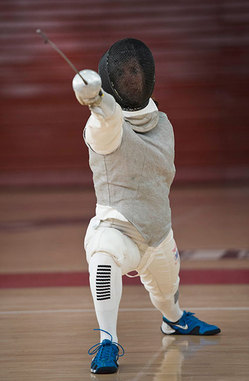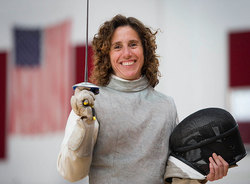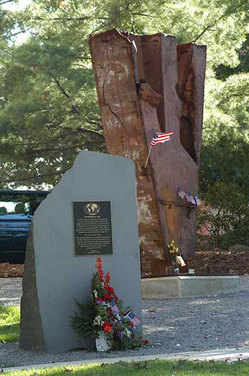 Almost everyone has a story of “where I was on September 11, 2011.” Here is mine.
Almost everyone has a story of “where I was on September 11, 2011.” Here is mine.
I was off campus for a meeting at the Chamber of Commerce.
The director had his television on, and we both stood there, stunned and silent. I saw the second plane hit the World Trade Center. “What a horrible accident. How could that happen?” I remember asking out loud, thinking that the pilot must have made a tragic mistake or maybe the plane’s instruments had malfunctioned. The response from the Chamber director is still with me. No words, just a look of disbelief, a failure to understand how anyone could be so naive as to think that these attacks were accidents.
And in seconds, I got it. A sickening realization of the truth. An immediate worry for my family, for my children, who had just arrived at their fifth-grade classrooms at East Pike Elementary School.
“If this could happen in America, in New York City, in Shanksville, at the Pentagon, could it happen here, in my town, at my university, to my home?” It was a question we all were asking.
In the weeks that followed at IUP, we all tried to think about the best ways to help our students, our parents, and our staff and faculty, especially those who had friends and family in New York City and abroad. We offered counseling. We assured worried parents that their children were safe. We decided to keep up business as usual, thinking that it would give students something to do, and to think about, if classes continued. We were afraid for our international students and faculty members, especially those who were Muslim, and tried to offer them as much support as we could.
I hated that this tragedy had taken over our lives, that it was all that we could think about or talk about. I knew it had to be our priority, but I hated it.
I just wanted life before 8:46 a.m. September 11, 2001, back.
We spent a lot of hours discussing what we should do “in response to September 11.” We participated in President George W. Bush’s national call for a prayer and remembrance event. More than 4,500 people gathered in the Oak Grove for a ceremony that still brings tears to my eyes when I think about it ten years later.
We needed some kind of educational program, some kind of discussion, we all agreed. We broke things down. It had to be a series, we felt. The issues surrounding September 11 were just too big for one presentation. What would we call it? How would it look?
We came up with “9-11: A Community Discussion.” It felt right for the first program to be about the basics. What had happened? What do we know? I remember suggesting to the planning committee that we should use the word “understand,” as in, “Understanding 9-11.”
Several heads nodded; people started to take notes. Good, I thought. Now we can move on and start planning the program. We can move on, and go back to the way things used to be. If we just understand the what and the why, it will never happen again. We can make sense of things again.
And then a student spoke up. “I don’t think that’s right,” she said. “I don’t think we should say ‘understand.’ I’ll never understand September 11. I can acknowledge it, I can cope with it, I can move past it, but I will never understand it.”
Her comment has been with me since September 2001. And ten years later, I know she is right. I still struggle to “understand” the September 11 attacks.
I’ve moved forward, but without the sense of innocence I had before September 11, 2001. I no longer have the certainty that I had on September 10, 2001, that the violence of the following day just isn’t possible in my world.
I miss that innocence. I miss my children being that naive. I miss America being that naive.
I continue to appreciate that the university and Indiana community come together each September 11 to mark the day. And even though I’ve been thick in the planning of each program and I know the words to be spoken, I still find myself fighting back tears as I stand outside in the Oak Grove, thinking of how our lives were forever changed by September 11, 2001.
I’ve also watched the mother of one of our alumni lost in the World Trade Center attacks accept condolences and flowers from our president during the 2008 ceremony. Her face, still full of grief and disbelief, also will always be with me. I don’t let myself think about it too hard, as it breaks my own heart. Too close to home for those of us who are mothers, especially mothers of sons.
In 2002, less than a month after the first anniversary of September 11, we dedicated an artifact from the World Trade Center, on loan from the Kovalchick family, of Indiana. I’ve watched tour groups go by the monument, and I wonder what these high school students, who were in third and fourth grade in 2001, think about the structure. Maybe September 11 has been so much a part of their lives that they don’t realize there was a time when the World Trade Center was a symbol of commerce and prosperity and Shanksville was just a sleeply little farm town outside of Johnstown.
This year, we have created an opportunity for a different kind of reflection, a more personal time for individuals to think about what this decade has meant to them and what they will do to move forward. I hope it brings comfort and peace to those who take part in this vigil.
I will always grieve for the loss of innocence. But I do not hate talking about September 11. The sadness is with me, but it does not define me any longer.
Thoughts? Comments? Please feel free to share them below.
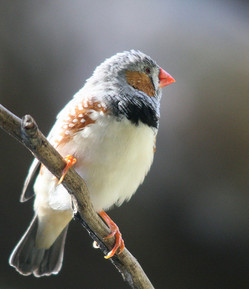 I’m an early riser, and I love the sound of the birds in the morning.
I’m an early riser, and I love the sound of the birds in the morning.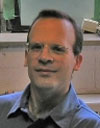 Dr. Nealen says that songbirds learn to vocalize or sing in a way that matches how humans learn to speak–by hearing themselves practice. In humans, hearing our own speech helps us to produce normal speech. Just ask any parent about that–it’s what we do to help our babies learn to talk.
Dr. Nealen says that songbirds learn to vocalize or sing in a way that matches how humans learn to speak–by hearing themselves practice. In humans, hearing our own speech helps us to produce normal speech. Just ask any parent about that–it’s what we do to help our babies learn to talk.
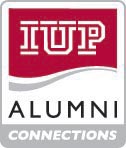 Some say who you know is as important as what you know. If that’s true, what do you do when you don’t know someone? My colleagues in the
Some say who you know is as important as what you know. If that’s true, what do you do when you don’t know someone? My colleagues in the 

